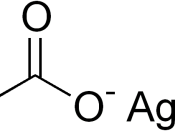Ksp Study
INTRODUCTION
As a general rule, hydroxides and all the salts of the alkali metals are soluble in water, and many of the hydroxides and salts of the alkaline earth metals have very small solubilities. Weak electrolytes are salts with relatively low solubility in water.
When we use the solubility rules to predict whether or not a precipitate will form when two solutions are mixed it is more accurate to say that the precipitate may form rather than the precipitate will form because if the solutions were very dilute, a precipitate might not form. What concentrations of ions will give a precipitate? We can answer this question by considering the equilibrium between a solid salt and its ions in a saturated solution of the salt in a more quantitative manner.
Even if a salt is described as insoluble, there must be very small concentrations of ions in equilibrium with the undissolved salt.
For example, if we have a saturated solution of CaSO4 in equilibrium with some undissolved CaSO4, the Ca2+ and SO42- ions are continually leaving the crystals and passing into solution, while ions from the solution are continually attaching themselves to the crystals. At equilibrium, the rates of the two opposing processes are equal:
CaSO4(s) "î Ca2+(aq) + SO42-(aq)
The expression for the equilibrium constant is:
eq
The equilibrium between CaSO4(s) and Ca2+(aq) and SO42-(aq) is an example of a heterogeneous equilibrium because it involves both a solid and a solution. As we know, the concentration of a pure solid is a constant which does not vary, and so it can be incorporated in the equilibrium constant to give another constant, Ksp, which is called the solubility product constant.
In general, for an ionic compound with the formula AxBy the equilibrium in a saturated solution can be written...


